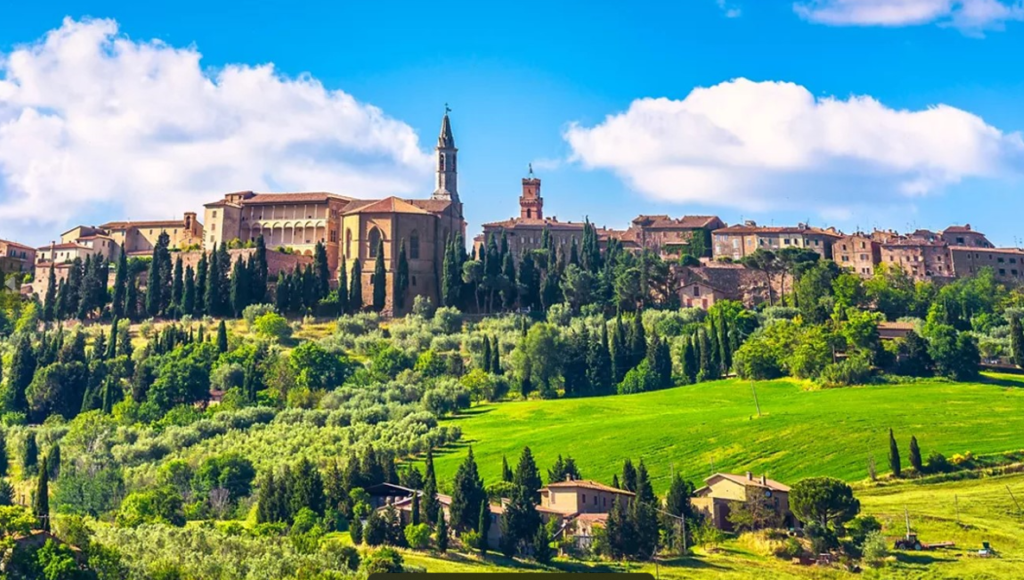PIENZA is a small village in the south of Tuscany, in the famous Val d’Orcia, absolutely worth a visit. It is located about 20 km east of Montalcino and a few km west of Montepulciano and south of Siena. It is considered one of the most beautiful villages in the world and is rightfully included in the UNESCO World Heritage list. Pienza and all its surrounding countryside offer dreamlike scenery with breathtaking views, soft hills, and streets lined with rows of tall cypress trees, while the enchanting historic centre has been consciously designed and built to make it the ideal city of the Italian Renaissance.

Until 1462, the village was nothing more than a small hamlet called Corsignano. The event that changed its fortunes was the birth in 1405 of Enea Silvio Piccolomini, who fifty-three years later became Pope Pius II. On a journey to Mantua, the pontiff found himself passing through his birthplace and the state of decay in which he found it prompted him to decide to build a new ideal city on top of the ancient village, entrusting the renovation project to the architect Bernardo Rossellino: the work lasted about four years and led to the realisation of a harmonious town with typically 15th-century forms. The premature death of Pope Pius II also ended the history of the new town named after him – Pienza in fact means ‘town of Pius’ – which has undergone limited changes since then.

The co-cathedral of Santa Maria Assunta is the main place of worship in Pienza
The complex, which stands on the site of the ancient parish church of Santa Maria, but oriented differently, was designed to fit scenically into the town’s main square, the Piazza Pio II, and was built at the behest of Pope Pius II Piccolomini between 1459 and 1462 by Bernardo Rossellino during the renovation of the town. The building was constructed with an unusual north-south orientation (with the main facade facing north) for the urbanistic coherence that the Pope and Rossellino were trying to achieve. Moreover, in order to enlarge the square.
Although it is one of the most important monuments of the Italian Renaissance, for some details such as the pitched roof and the central eye, it is reminiscent of Franciscan Gothic churches, but also of the German Hallenkirchen that Pius II had seen on his many travels (especially for the extreme brightness of the stained-glass windows); the whole is, however, Renaissance and is influenced by Leon Battista Alberti, now considered the real inspiration behind Pienza and the Duomo.
The interior, still structurally linked to the Gothic style, is divided into three naves all of the same height, the middle nave being only wider than the side naves. Two rows of pillars with leaning half-columns and decorated capitals, raised above the pillars, divide the naves.
A co-cathedral is a church that has the same dignity and privileges as a cathedral, but has less precedence. The cathedral therefore remains the principal church of a diocese, while the co-cathedral is equal to it. The right to elevate a church to the dignity of co-cathedral rests with the Holy See.
.


Its historical centre is cosy and easy to visit on foot, amidst cobbled streets, squares and elegant historical buildings designed to reflect the humanistic values of an era according to a modern urban plan with the main square, Piazza Pio II, at its centre, surrounded by imposing Renaissance buildings such as Palazzo Piccolomini, the Diocesan Museum, Palazzo dei Canonici, the Co-cathedral of Santa Maria Assunta, Palazzo Comunale and Palazzo Ammannati, and numerous shops selling one of the city’s typical products: artisanal cheeses and pecorino cheese.



